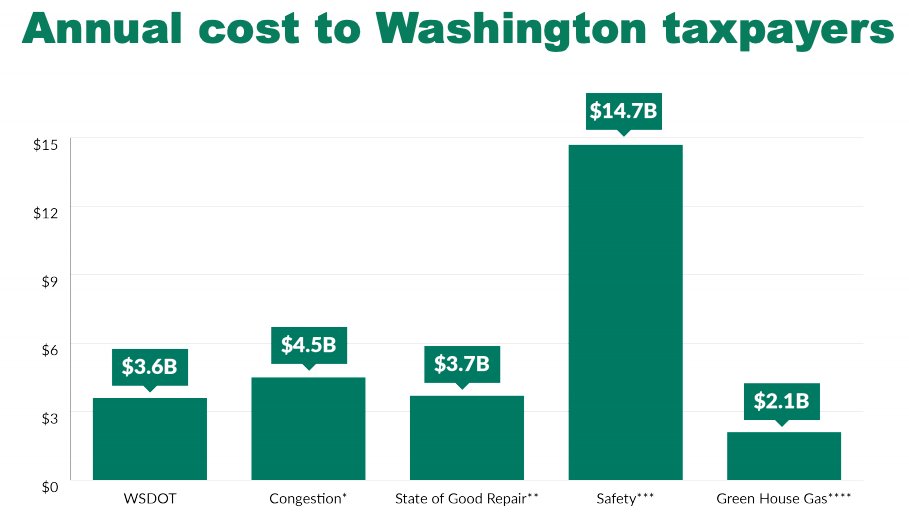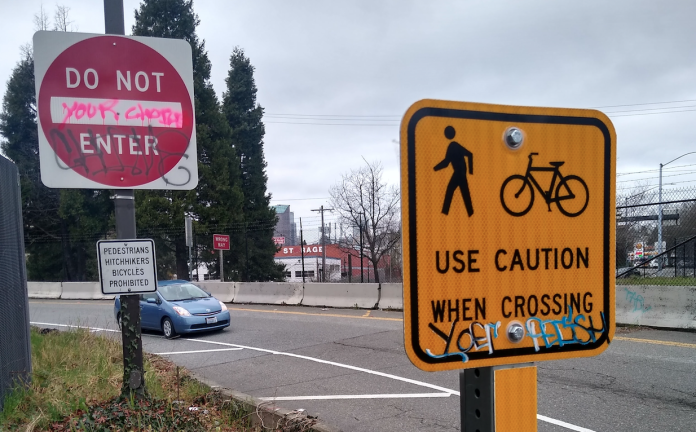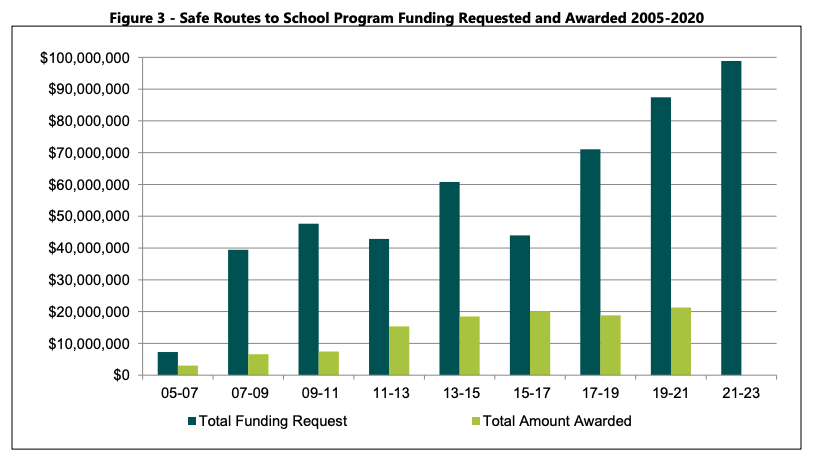Last Wednesday, as the Washington State Senate’s transportation committee was preparing to vote to send its $17.8 billion transportation spending package to the full Senate, several amendments to the package were proposed. One amendment proposed by Senator Mona Das (D-Kent) would have increased the amount allocated to state-selected Pedestrian and Bicycle projects by $96 million dollars, an increase of close to half over the sixteen-year lifespan of the “Forward Washington” package. Committee chair and architect of “Forward Washington,” Senator Steve Hobbs (D-Lake Stevens), joined with the ranking member Curtis King (R-Yakima) in asking committee members to vote against the amendment and it failed in a voice vote.
Moments later a similar amendment introduced by Senator T’wina Nobles (D-Tacoma) to increase the amount allocated to the state’s Safe Routes to School grant program by $96 million failed as well. The Chair of the committee and its top Republican both agreed; there wasn’t room in the package for those spending items, even though a vote to approve just one of the items would have added 0.5% to the total package.
The morning after that committee meeting, Washington State Department of Transportation (WSDOT) Secretary Roger Millar was virtually attending the quarterly meeting of the Washington Traffic Safety Commission, which he sits on. The commission was reviewing the planned breakdown in traffic safety grants for next year. Twelve percent of the $12.6 million grant portfolio is planned to go toward “non-motorized traffic safety” and the Secretary, noting that traffic fatalities are continuing to increase among people walking, biking, and rolling in our state, particularly in the Puget Sound region, asked if that amount could be increased. But later in the meeting, when the agenda turned to the legislative session, the topic of how the $17.8 billion transportation package may impact traffic safety in Washington did not come up.
The “Forward Washington” package, as it stands now awaiting a floor vote in the Senate, would allocate almost as much ($146 million) to replenish the Tacoma Narrows Bridge toll account, preventing WSDOT from needing to raise toll rates, as it would in Safe Routes to School grant program over the 16 years: $148 million.
The Safe Routes to School program is vastly underfunded in terms of what’s been allocated by the legislature compared to what local governments request to be able to safely encourage active transportation trips to schools. The level of those requests has been steadily increasing in recent years while the state funding level has not kept up. The $148 million the package authorizes (which translates to $18.5 million per biennium) is not nearly enough to keep up with the requests, many of which come from cities that have very limited choices and prospects for raising transportation revenue locally. For the 2021-2023 biennium, WSDOT projected that 102 out of 125 requests for Safe Routes to School project funding would be declined. Such a huge gap is also seen with the state’s Pedestrian and Bicycle grant program.
In Washington, someone was killed in traffic roughly every sixteen hours in 2020. Of those fatalities, 44% occurred on state-controlled highways, including high-crash corridors like Aurora Avenue N in Seattle. Secretary Millar, in his introductory remarks to the transportation committees this January, emphasized the importance of making investments in the safety of the state’s transportation system by citing the estimated annual cost to Washington residents as a whole stemming from deficiencies in transportation safety: $14.7 billion dollars annually, over four times the annual budget of WSDOT itself.

And yet the transportation package spends most of the money it raises on highway expansion projects. Many of those expansion projects, like the “Interstate Bridge Replacement” project targeting a segment of I-5 between Washington and Oregon, come in the guise of maintenance and preservation. But the existing highway system has a large backlog of safety deficiencies that have been well-documented that are largely being ignored in favor of chasing the brass ring that is “congestion relief.”
In 2020, as traffic volumes declined statewide, so did the number of overall traffic collisions. And yet serious injuries and fatalities statewide went up. One factor that the state’s Traffic Safety Commission was told likely accounts for this is a double-digit increase in speeding observed statewide. WSDOT’s Active Transportation plan, released in draft form late last year, assigned a price tag to adding speed management treatments to 849 miles of state highways — all state highways that run though population center boundaries with a posted speed of 30 mph or greater. That cost is estimated at $283 million, almost the amount allocated ($245 million) to one highway expansion project in the proposed transportation package, a new access ramp for I‐405 at N 8th Street. Spending the money on speed treatments should be the priority in a state that has committed to ending all traffic fatalities by 2030.
The committee votes on Wednesday against Safe Routes to School and bike and pedestrian funding illustrate how little this $17.8 billion package centers the safety of Washingtonians. Legislators should not rush this package into law before the end of the session on April 25. They should go back to the drawing board.
Take action: Send a letter to your state legislators. Only takes a minute.
Ryan Packer has been writing for The Urbanist since 2015, and currently reports full-time as Contributing Editor. Their beats are transportation, land use, public space, traffic safety, and obscure community meetings. Packer has also reported for other regional outlets including Capitol Hill Seattle, BikePortland, Seattle Met, and PubliCola. They live in the Capitol Hill neighborhood of Seattle.




